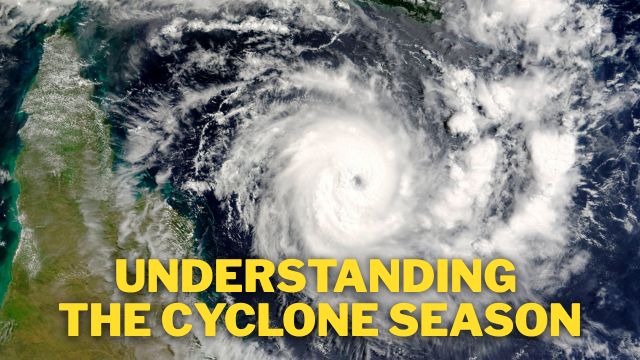Yes, it’s cyclone season—but no, you don’t need to cancel your holiday
Mauritius is a year-round dream destination, with turquoise lagoons, warm weather, and friendly locals. But between November and April, the island enters what’s known as cyclone season—a time when tropical storms can form over the warm Indian Ocean.
If you’re planning a holiday during these months, don’t worry: cyclone season doesn’t mean constant danger or daily storms. In fact, most visitors enjoy sunny skies for their entire stay. Still, it’s good to be informed—so here’s what you really need to know about the cyclone season in Mauritius.
What is cyclone season, exactly?
Cyclone season refers to the months when tropical cyclones—rotating storm systems—are most likely to form in the southwest Indian Ocean. These storms feed on warm ocean water and atmospheric instability, and they can vary in strength from mild tropical depressions to powerful systems with high winds and heavy rainfall.
In 2025/2026, meteorologists expect an above-average cyclone season, with 9 to 14 named storms predicted in the region. But let’s be clear:
👉 Most of these will never come close to Mauritius.
👉 Only a few ever make landfall anywhere at all.
On average, Mauritius experiences a direct cyclone hit only once every 5 to 6 years. And even then, thanks to world-class preparation and infrastructure, the island handles it smoothly.
Why is this season expected to be more active?
The Indian Ocean is currently experiencing a climate pattern called the Indian Ocean Dipole (IOD). In its positive phase, the ocean waters near Mauritius and Madagascar are warmer than usual—providing more fuel for cyclone formation. This is why forecasters believe the 2025/2026 cyclone season might be slightly more active.
But keep in mind: more storms doesn’t automatically mean more destruction. Many systems stay far out at sea. Others weaken before reaching land. Some bring only increased wind or brief rainfall to coastal areas.
It’s also worth noting that cyclones are closely tracked by satellite and meteorological stations across the region. In Mauritius, the Mauritius Meteorological Services (MMS) monitors weather systems 24/7 and provides accurate, timely warnings.
How are cyclones named?
When a storm in this region reaches a certain intensity (moderate tropical storm), it gets a name from an official list. If the cyclone forms between 55° and 90° east longitude, the name is assigned by the Mauritius Meteorological Services.
This season, the next name on the list is CHENGE. Other storms might be named by meteorological services in Madagascar, Australia, or Indonesia, depending on where they form. And in case you’re wondering:
✔️ A cyclone keeps its original name even if it moves across regions.
What happens if a cyclone approaches Mauritius?
Mauritius is known for its top-tier cyclone preparedness. The government uses a well-established warning system, from Class 1 to Class 4 alerts, that provides clear guidance for residents and tourists.
If a cyclone comes close, you will:
- Receive timely updates via TV, radio, text messages, and hotel staff
- Be informed of any recommended precautions or temporary closures
- Still be safe in most accommodations, which are built to cyclone standards
At WowMauritius, we track every system during cyclone season and publish clear, calm updates in English and Hungarian. We’ll tell you exactly what you need to know—without unnecessary panic.
Should tourists avoid cyclone season?
Absolutely not. In fact, cyclone season often brings some of the most beautiful days—warm breezes, fewer crowds, and lush green landscapes. Many travelers visit during this time and never encounter more than a passing tropical shower.
Just be cyclone-smart:
- Choose flexible bookings where possible
- Check weather forecasts (or follow WowMauritius)
- Know that safety measures are in place if needed
Most of the time, cyclone season in Mauritius is just another way the island shows its tropical character—with a little extra drama in the clouds.
Yes, cyclone season is real—but it’s also predictable, manageable, and rarely dangerous for tourists. Mauritius has decades of experience dealing with tropical weather, and every year it welcomes thousands of happy travellers during cyclone months.
So pack your swimsuit, grab your sunhat, and let us keep an eye on the weather for you.
If anything serious comes up, the Mauritius Meteorological Services will issue official alerts—followed closely by WowMauritius, keeping you informed calmly, clearly, and in your language.
Where to stay during cyclone season?
If you’re visiting Mauritius during cyclone season, choosing the right accommodation can make all the difference. We highly recommend the Victoria Beachcomber Resort & Spa, located on the sheltered west coast of the island. This family-friendly beachfront resort offers solid infrastructure, attentive staff trained for tropical conditions, and one of the best spots to enjoy sunsets—even during the wetter months.
Whether the skies are sunny or dramatic, you’ll feel relaxed, safe, and well cared for. Cyclone season or not, Victoria Beachcomber is a place where tropical elegance meets genuine peace of mind.



